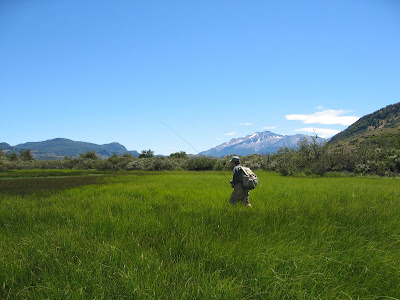Somethings change, somethings do not...a reprint:

Paul Dillon Image |
| Currently PMD emerger patterns are the most effective for surface-feeders |
ANGLING UPDATE: 17 JULY 1997*
My apologies for this long delay. I was unaware how many cyber-surfers bookmarked this UPDATE, and actually read my comments! Thanks for the vote of confidence on the reliability of my written word. I will attempt to be more timely for the rest of the season.
We are now experiencing above-normal warm, mountain weather in the High Sierra. During the last four weeks we've had a mixed bag of climatic conditions; sunny and clear skies, endured rain, hail, snow in the higher slopes, blistering winds that at times made it almost impossible to cast or even lob a cast to showing fish or suspected lies. To compound matters relative to fly fishing; regulated federal flows out of Lake Tahoe into the main Truckee had been erratic and unpredictable, maxing-out to 1500 cfs!!! During the last 10 days they've been relatively stable...angling conditions on most waters are now superb.
MARTIS LAKE as been sporadic at best. The lake is settling into its mid-summer pattern of warm water temps; 71 degrees in the shallows at mid-day on Wednesday the 15th. The bloom of surface vegetation makes it almost impossible to float-tube the inlet area. The inlet channel is clearly defined, with observable, midge-slurpers in the morning; before the wind starts-up. Prams or pontoon boats are best in this area; float-tubes are fine for the rest of the lake. Aside from the midges, be on the look-out for Callibaetis, both duns and spinners. During the day search the drop-offs and lake edges with Damsel or Dragonfly nymph imitations or your favorite searching streamer...HINT: the red-side shiners have an iridescent red stripe on their sides. I've used a foam beetle with much success in the past during hot summer days; they should be in your lake-fishing fly box. Blood Midges and small dark midges appear in the evening. A BB Midge or Blood Midge Cripple, on a dead-drift or slow draw (creating a V-shaped surface disturbance), attracts cruising fish. You must discern the "decent" gulpers from the planted 7"-10" Cutthroat & Rainbows.
TRUCKEE RIVER flows are ideal; water temps are spiking at 66-68 degrees, admittedly warm and on the upper cusp for triggering the trout's ideal feeding metabolism of 55-65. Some anglers are starting split-session excursions; early and late. Adult Little Yellow Stoneflies, Green Rock Worm and Spotted sedges, the river's three featured hatches are present in good numbers; in addition to the small, #16-18 tan caddis (Glossosoma?).
Dry fly fishing has been good. High-Stick/Short-Line and "stick and move" in th pockets, or precise drifts to showing fish gorging on emerging PMDs and Mahogany Duns in the runs and tail-outs of pools. HINT: Swing #14 Partridge and Yellow or Grouse and Orange soft-hackles in front of targeted risers if you are getting refusals. Best surface patterns have been a #14 Glickman Yellow Stone, Orange or Yellow Parachute Humpy, and #16 Grey Elkhair Caddis.
Sub-surface, search with nymphs/larvae/pupae suggestive patterns. Try a #6 Golden Stonefly, #10 BeadHead Prince, a #14 Foster's Turkey BeadHead, a #16 BeadHead PT or BH Green-Sparkle Caddis pupa. Wild Rainbows and Browns to 19" have been netted.
Increase flows into the LITTLE TRUCKEE rom Stampede dam have made the stream very fishable. There have been a mid-day PMD hatch which can keep you busy casting to rising trout. The trout are not spooky when they're working the surface. But, be forewarned; the feeders are very selective. A Mercer PMD emerger works very well. Your presentation has to to float in the exact feeding lane...accuracy is imperative. Unfortunately the fish are smaller than last year. I attribute this my observations that too many large spawners/broodstock were being harvested last year. DFG has a lot of data and angler input on this fishery; they've been indecisive...this fishery needs special regulations with limited kill and gear restrictions.
Guide client, Paul Silva of Santa Clara, received my coveted TRUCKEE CONSERVATION AWARD for "actions above and beyond the call of angling" for rescuing about a dozen, stranded, Rainbows and Browns who faced certain death in standing pools of water; the result of a sudden flow draw-down from Stampede dam. A tip of the rod to this unselfish act!
The SMALL CREEKS, surprisingly, are fishing quite well for this time of year. A 12" trout is considered a "hog". Attractor dries are sufficient. Use your USGS topo map. Next report will have a detailed report on MILTON LAKE. until nest year...Tight Lines!
*This UPDATE was initially on my early website onl ...eventually, per request, I e-mailed it directly to near-400 recipients









































